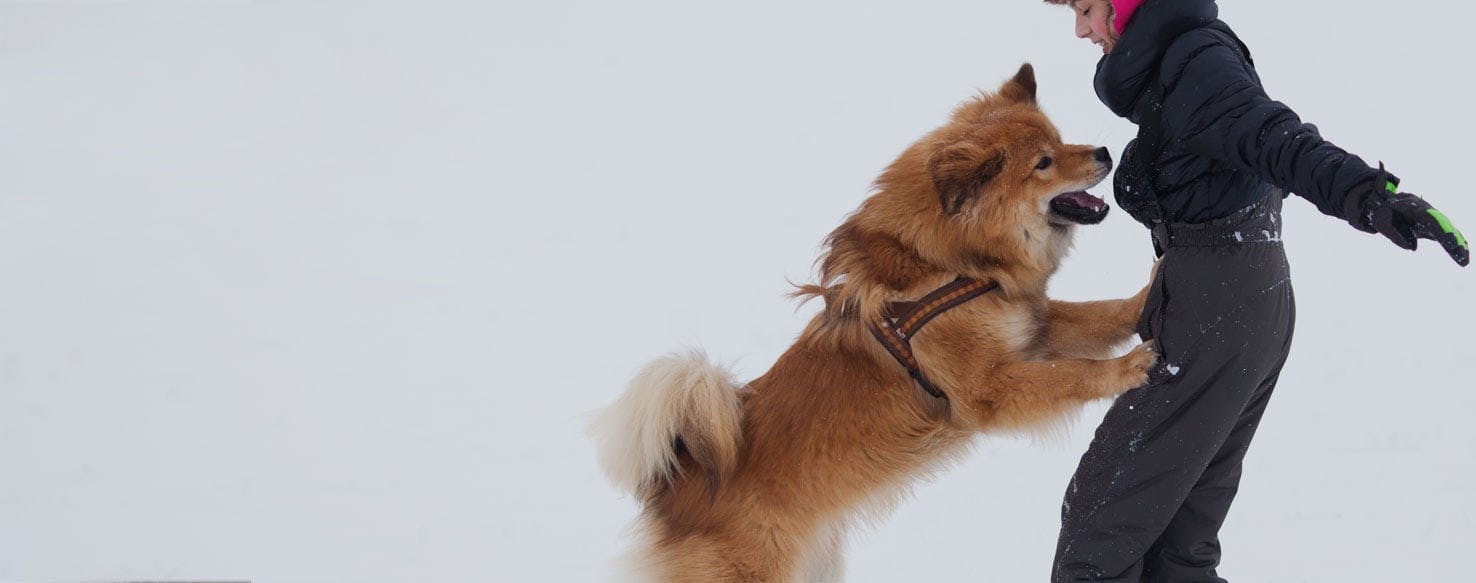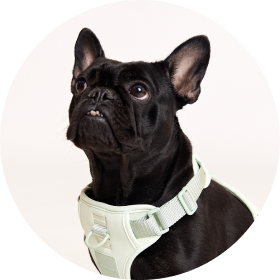- Home
- The Daily Wag!
- Senses
- Can Dogs be Rehabilitated After Biting?

Can a dog be rehabilitated after it bites someone? For the most part - yes. But let's first look at the reason a dog bites someone.
Any dog can bite; if they are scared or in pain or defending themselves, it is a natural instinct to them.
There are some dogs, however, who are used in dog fighting rings by cruel humans and are taught to bite or fight quite literally for their lives. Then there are also, unfortunately, dogs that are super-aggressive whether provoked or not.
The trick is to learn the difference.
Statistics show that nearly 4.5 million people are bitten by dogs each year and that only 1 out of 5 of those bites require urgent medical attention. It is important however to analyze the reason behind that bite.
One incident comes to mind that a farmer delivering meat to a family got bit by the family dog. This dog knew the farmer and was not an aggressive dog.
The family came to find out that the farmer had just birthed a baby goat early that day and the dog was smelling goat. That dog had been rescued from a puppy mill that had goats on the property - meaning this put the Dog's olfactory senses on overload. The smell brought back a bad memory and the dog simply reacted.
You can normally tell if a dog is about to bite when their hackles go up or they begin to growl, bear their teeth or bark incessantly. This means they feel threatened in some way and "you have been warned" human.
But some dogs either do not emit or choose not to emit these warning signs. That is when the problem of repeat biting arises.
Most of the time, dogs bite to protect themselves, their "stuff" or their person. If the dog is in pain and is touched too roughly, they may bite then, too.
Some signs to look for if you encounter a strange dog, an injured dog, or even your dog, is direct eye contact. This is the dog's way of challenging you; they are in charge and they are in control. Their tail will be up and they will be sniffing. They will bear their teeth, growl or even bark. Their legs will be apart and they will push their chest out to make himself appear more threatening or bigger. Their ears will be up and alert.
A dog is always capable of biting, given the circumstances. Whatever the reason, you will want to be on your guard when you meet or approach an injured, stray, hungry or lost dog.
Approach the dog with as calm of an energy as possible because dogs have the innate ability to mirror the energy we give off. If possible, sit nearby and let the dog come to you when he gets curious. Try to not stand over the dog, but either sit or kneel, making yourself more "doggy" sized. Place your hand out and let the dog sniff it. If the dog growls or snaps at your hand, you would be best to back slowly away and call animal control. The dog may be injured and is acting out of pain and fear.
Body Language
These are some of the main signs a dog will show when they are about to bite:
- Growling
- Staring
- Alert
- Barking
- Guarding
- Shaking
- Panting
- Raise Ears
Other Signs
Here are a few more signs that a dog who is about to bite will show:
- Territorial Behavior
- Direct Eye-Contact
- Guarded Behavior
- Wide Stance
- Tail Straight Up
Most scientific studies indicate that it is very possible to rehabilitate a dog after they bite another dog or person. The questions to ask are - is that a dog a repeat offender? Do they have a history of being aggressive or biting people or other dogs, whether provoked or not?
There are some cases where habitual, aggressive dogs are deemed as vicious by the court due to the severity of their biting or attacking others and ordered to be euthanized. It is not a pleasant reality but in the cases where a dog inflicts extreme harm or death to another animal or person, some dogs do get destroyed.
If a dog inflicts a serious bite, the next step will be with an animal behaviorist for evaluation. The dog will then be trained to react differently to changing stimuli. If the trainer deems the dog safe to return home, this is wonderful news.
However, if the dog bites again, the city or county could seize them and their fate would be in the hands of a judge. As dog training expert Victoria Stilwell says - a Dog's temperament is nature; behavior is nurture which is 100% in our hands.
Why do dogs bite? They are reacting to us or to a situation; they are protecting themselves or their person from another person.
Recent studies show, that due to their insane olfactory abilities, dogs can smell stress or fear - or more fundamentally, urine or sweat. We know - gross, but this is how the dog knows we as humans are stressed or nervous around them. This is why dogs are more likely to bite a nervous or manic person.
Dogs also do not like to be challenged, so eye contact from a nervous, or what the dog perceives as an "aggressive person" (how is that for turning the table people?), may get a little nibble from Fido. Dogs also often bite frantically departing people, like children running passed them; they don't understand this energy so they respond with predatory aggression.
When a dog bites someone or another dog, that bite can be evaluated by using the Dunbar scale. Dog bites evaluated in levels 1 and 2 go through the normal evaluation process and are normally deemed safe enough to be placed back in their home. Dog bites that score in levels 3-6, however, are judged as being more severe and that, along with the dog's bite history, has everything to do with whether or not the dog can be successfully rehabilitated.
The Dunbar scale is:
- Level One: Bark or lunge toward someone; teeth do not make contact with skin.
- Level Two: Teeth touched the skin but no puncture mark was left.
- Level Three: 1-4 holes from a single bite of less than half the length of the biting dog's tooth.
- Level Four: Single bite, deep puncture of at least one and half times the length of the biting dog's tooth; wound turns black after 24 hours.
- Level Five: Multiple bite attack or multiple attack incidents involving the same dog.
- Level Six: Missing a huge portion of flesh.
A dog is always capable of biting given the circumstances. Many dog bites can be prevented if we use common sense in dealing with strange dogs. We are all guilty of seeing a dog and wanting to instinctively pick him up or pet him. You do not know this dog or how he may react to a stranger invading his space so abruptly. Take a beat and think before you react. If you have young children this is a vital lesson to teach them when dealing with any animal.
If you are a dog owner, we need to take every opportunity to teach Fido that biting is no Buenos! Whether it is simply roughhousing at home when playing or at the dog park - biting is a big old no-no. Puppies have that natural instinct to chew on things while they are teething, but they need to learn any teeth to human skin contact is forbidden. Some ways you can teach your dog not to bite are:
- Teach your puppy/dog that gentle play is fun but rough play, the kind with even a little dog teeth-to-skin contact, will not be tolerated. If you are playing with your pup and he/she nibbles on you, simply make a low yelp noise, like a pup would do, slowly pull your hand, arm away and ignore your pup. You are asking the pup to realize what he did was wrong and the fact that you are ignoring him will make that fact sink in faster than ever.
- When your dog tries to mouth you, redirect their focus to a toy or a treat.
- Bitter Apple - apply it to anything you do not want your pooch's mouth on.
- Do not reward bad behavior, but be sure to award changed or good behaviors.
Have questions or concerns about your pet?
Chat with a veterinary professional in the Wag! app 24/7.
Get Vet ChatSafety Tips When Dealing with a Rehabilitated Dog
- Determine the cause and conditions of the first bite.
- Do everything you can to not repeat that scenario.
- Remove stressors of the dog.
- Seek professional training to help rid the bad behavior.
Written by a Smooth Coated Collie lover Mary Alane Whalen
Veterinary reviewed by:
Published: 02/08/2018, edited: 04/06/2020
More articles by Mary Alane Whalen
